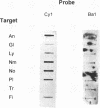Abstract
The DNA sequence of a 359-bp fragment of nifH was determined for the heterocystous strains Anabaena sp. strain CA (ATCC 33047), Nostoc muscorum UTEX 1933, a Nostoc sp., Gloeothece sp. strain ATCC 27152, Lyngbya lagerheimii UTEX 1930, and Plectonema boryanum IU 594. Results confirmed that the DNA sequence of the 359-bp segment is sufficiently variable to distinguish cyanobacterial nifH genes from other eubacterial and arachaeobacterial nifH genes, as well as to distinguish heterocystous from nonheterocystous nifH genes. Nonheterocystous cyanobacterial nifH sequences were greater than 70 and 82% identical on the DNA and amino acid levels, respectively, whereas corresponding values for heterocystous cyanobacterial nifH sequences were 84 and 91%. The amplified nifH fragments can be used as DNA probes to differentiate between species, although there was substantial cross-reactivity between the nifH amplification products of some strains. However, an oligonucleotide designed from a sequence conserved within the heterocystous cyanobacteria hybridized primarily with the amplification product from heterocystous strains. The use of oligonucleotides designed from amplified nifH sequences shows great promise for characterizing assemblages of diazotrophs.
Full text
PDF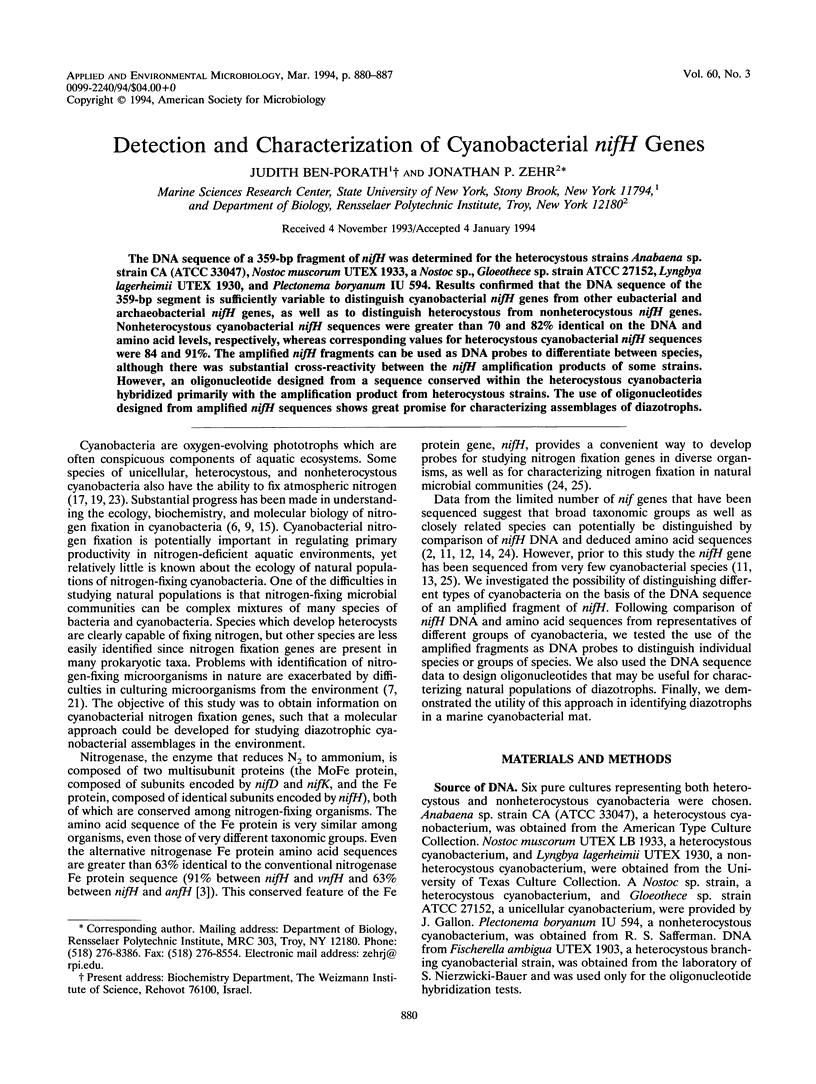

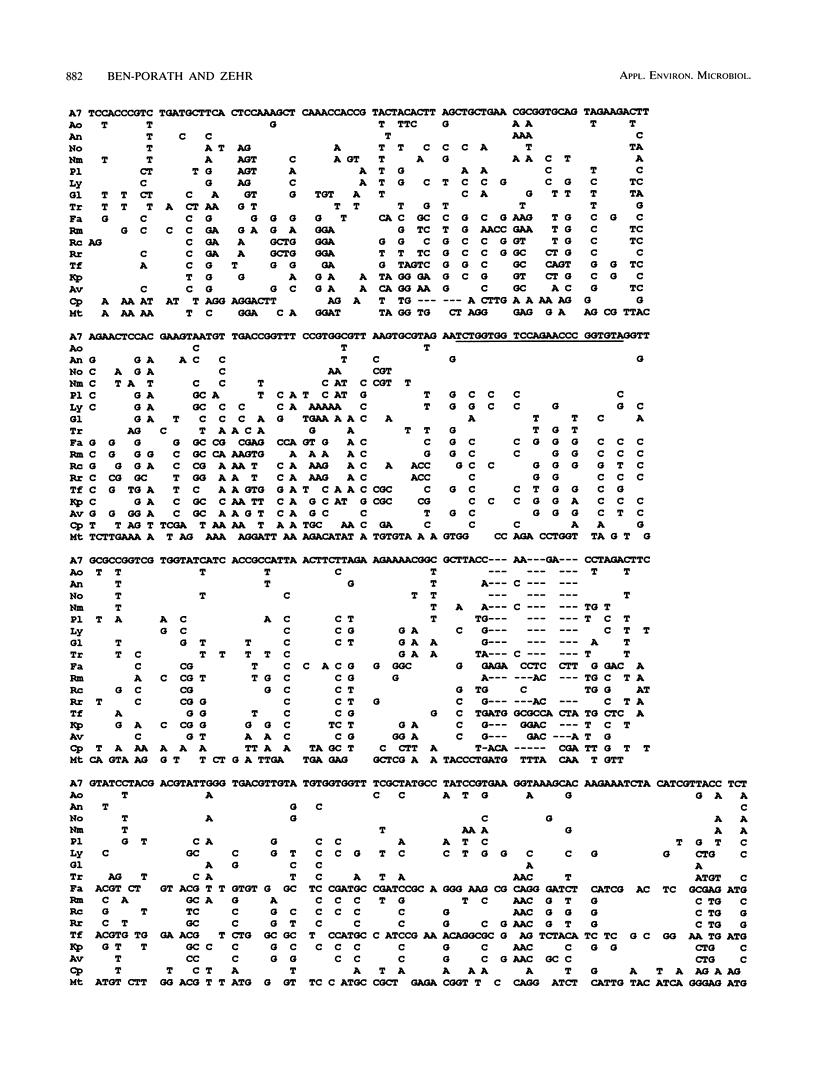
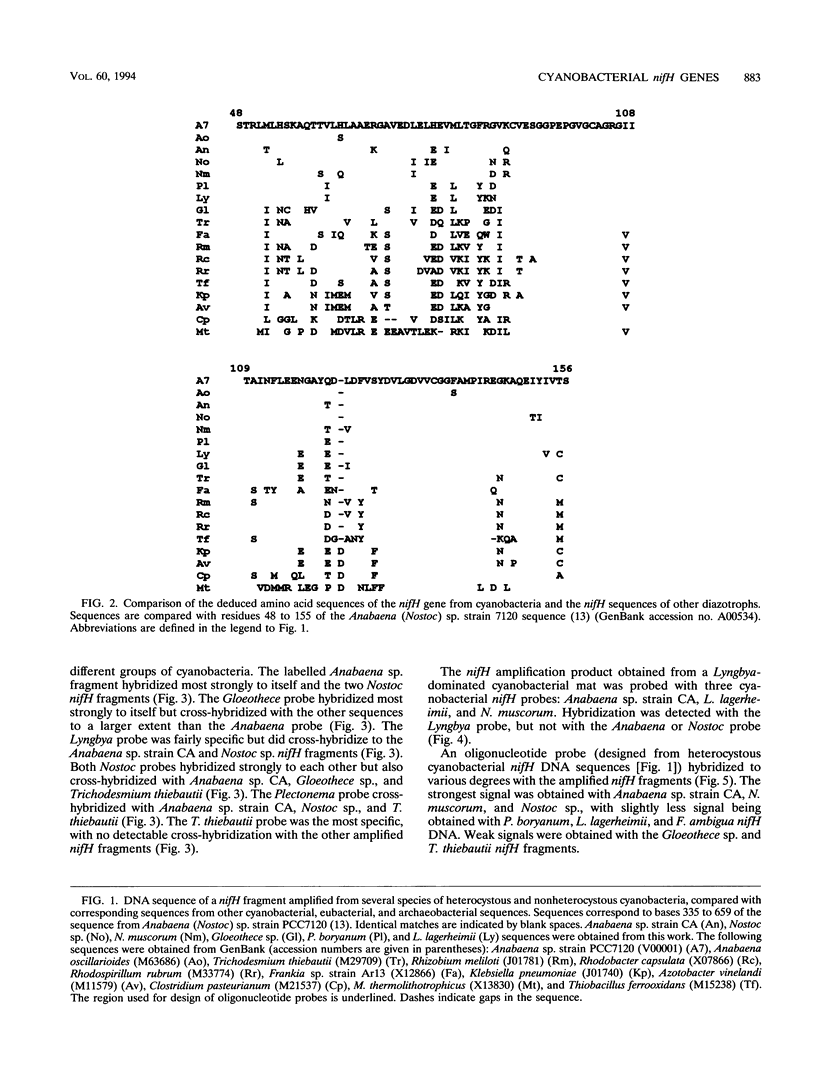
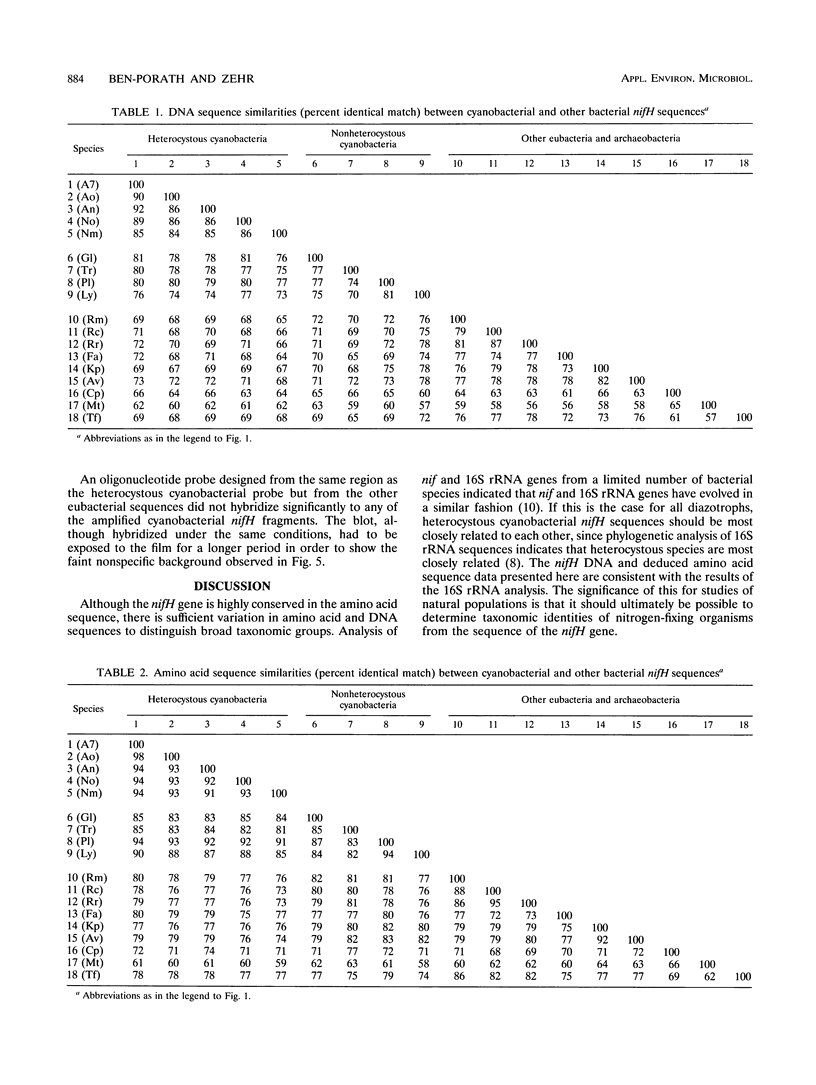
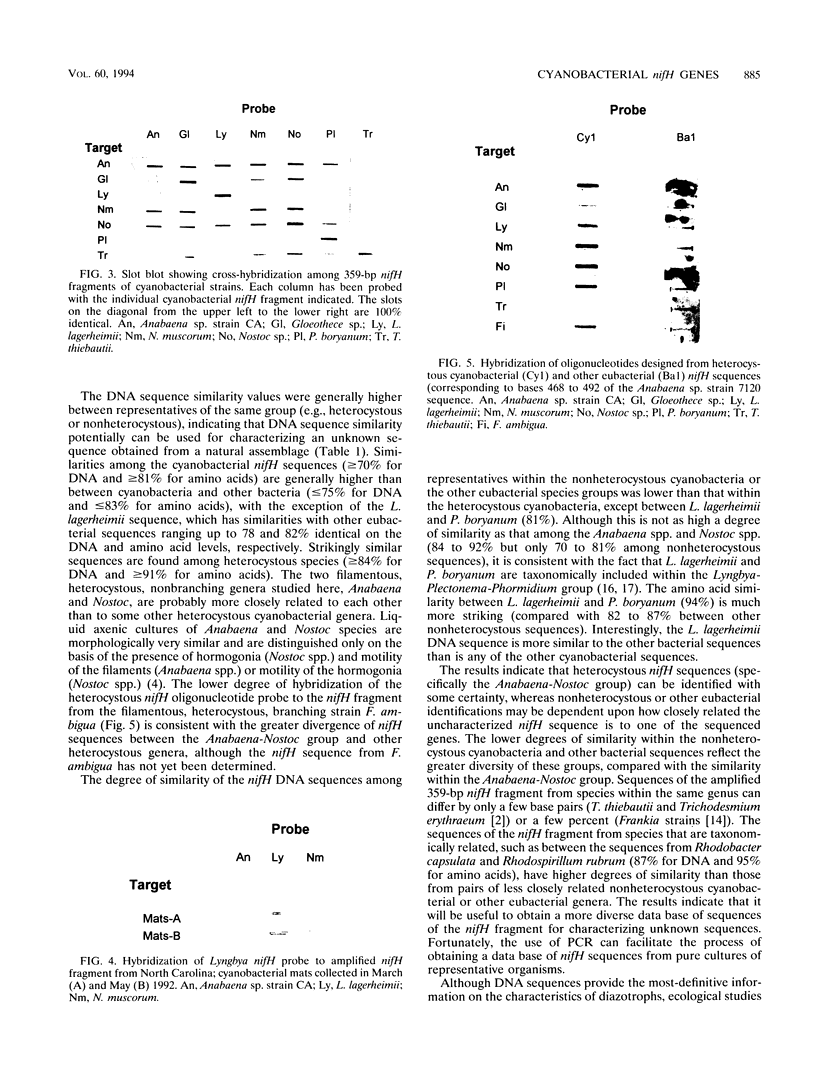

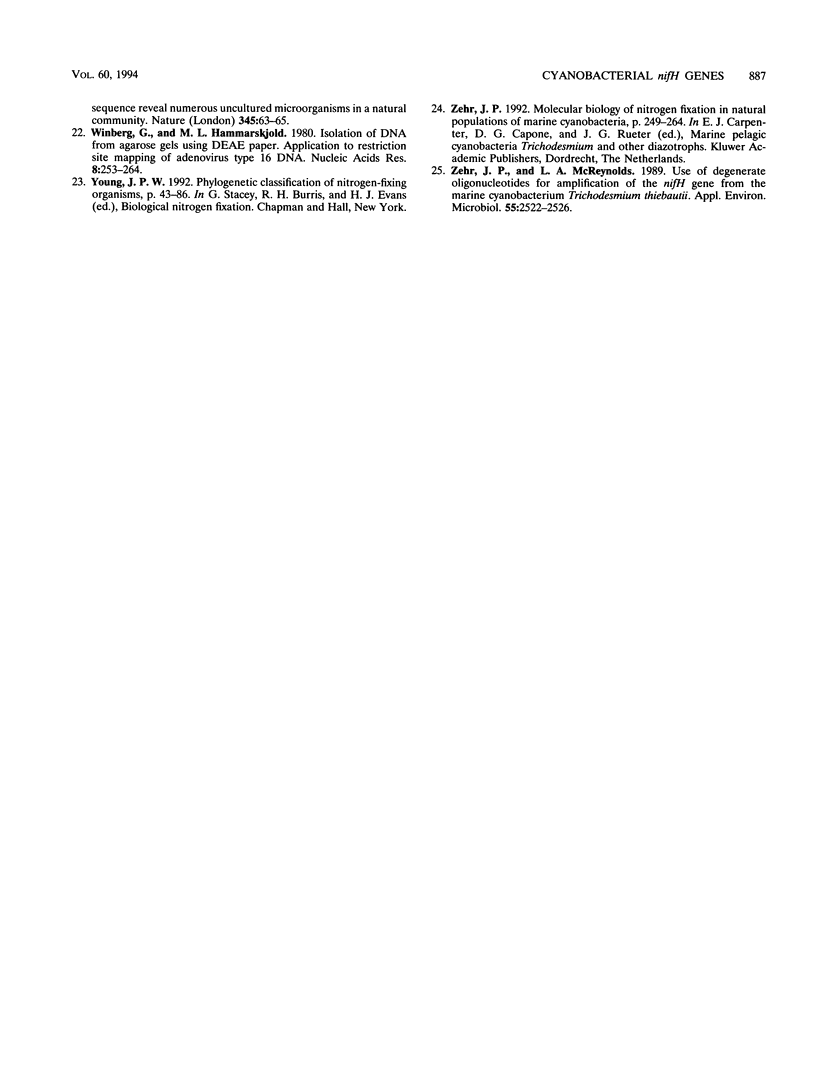
Images in this article
Selected References
These references are in PubMed. This may not be the complete list of references from this article.
- Bebout B. M., Fitzpatrick M. W., Paerl H. W. Identification of the sources of energy for nitrogen fixation and physiological characterization of nitrogen-fixing members of a marine microbial mat community. Appl Environ Microbiol. 1993 May;59(5):1495–1503. doi: 10.1128/aem.59.5.1495-1503.1993. [DOI] [PMC free article] [PubMed] [Google Scholar]
- Giovannoni S. J., Britschgi T. B., Moyer C. L., Field K. G. Genetic diversity in Sargasso Sea bacterioplankton. Nature. 1990 May 3;345(6270):60–63. doi: 10.1038/345060a0. [DOI] [PubMed] [Google Scholar]
- Giovannoni S. J., Turner S., Olsen G. J., Barns S., Lane D. J., Pace N. R. Evolutionary relationships among cyanobacteria and green chloroplasts. J Bacteriol. 1988 Aug;170(8):3584–3592. doi: 10.1128/jb.170.8.3584-3592.1988. [DOI] [PMC free article] [PubMed] [Google Scholar]
- Mevarech M., Rice D., Haselkorn R. Nucleotide sequence of a cyanobacterial nifH gene coding for nitrogenase reductase. Proc Natl Acad Sci U S A. 1980 Nov;77(11):6476–6480. doi: 10.1073/pnas.77.11.6476. [DOI] [PMC free article] [PubMed] [Google Scholar]
- Normand P., Bousquet J. Phylogeny of nitrogenase sequences in Frankia and other nitrogen-fixing microorganisms. J Mol Evol. 1989 Nov;29(5):436–447. doi: 10.1007/BF02602914. [DOI] [PubMed] [Google Scholar]
- Sanger F., Nicklen S., Coulson A. R. DNA sequencing with chain-terminating inhibitors. Proc Natl Acad Sci U S A. 1977 Dec;74(12):5463–5467. doi: 10.1073/pnas.74.12.5463. [DOI] [PMC free article] [PubMed] [Google Scholar]
- Tsai Y. L., Olson B. H. Rapid method for direct extraction of DNA from soil and sediments. Appl Environ Microbiol. 1991 Apr;57(4):1070–1074. doi: 10.1128/aem.57.4.1070-1074.1991. [DOI] [PMC free article] [PubMed] [Google Scholar]
- Ward D. M., Weller R., Bateson M. M. 16S rRNA sequences reveal numerous uncultured microorganisms in a natural community. Nature. 1990 May 3;345(6270):63–65. doi: 10.1038/345063a0. [DOI] [PubMed] [Google Scholar]
- Winberg G., Hammarskjöld M. L. Isolation of DNA from agarose gels using DEAE-paper. Application to restriction site mapping of adenovirus type 16 DNA. Nucleic Acids Res. 1980 Jan 25;8(2):253–264. doi: 10.1093/nar/8.2.253. [DOI] [PMC free article] [PubMed] [Google Scholar]
- Zehr J. P., McReynolds L. A. Use of degenerate oligonucleotides for amplification of the nifH gene from the marine cyanobacterium Trichodesmium thiebautii. Appl Environ Microbiol. 1989 Oct;55(10):2522–2526. doi: 10.1128/aem.55.10.2522-2526.1989. [DOI] [PMC free article] [PubMed] [Google Scholar]




